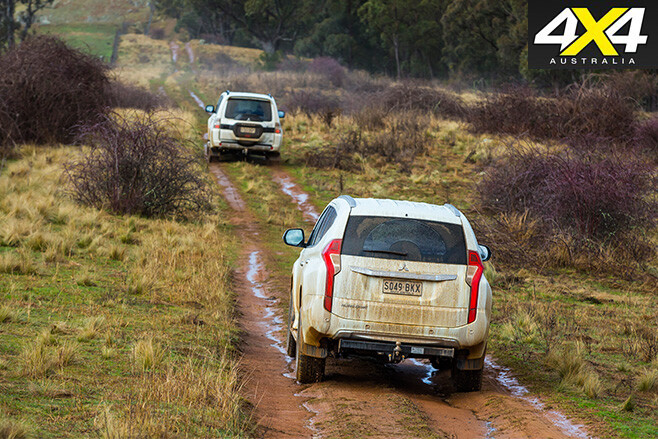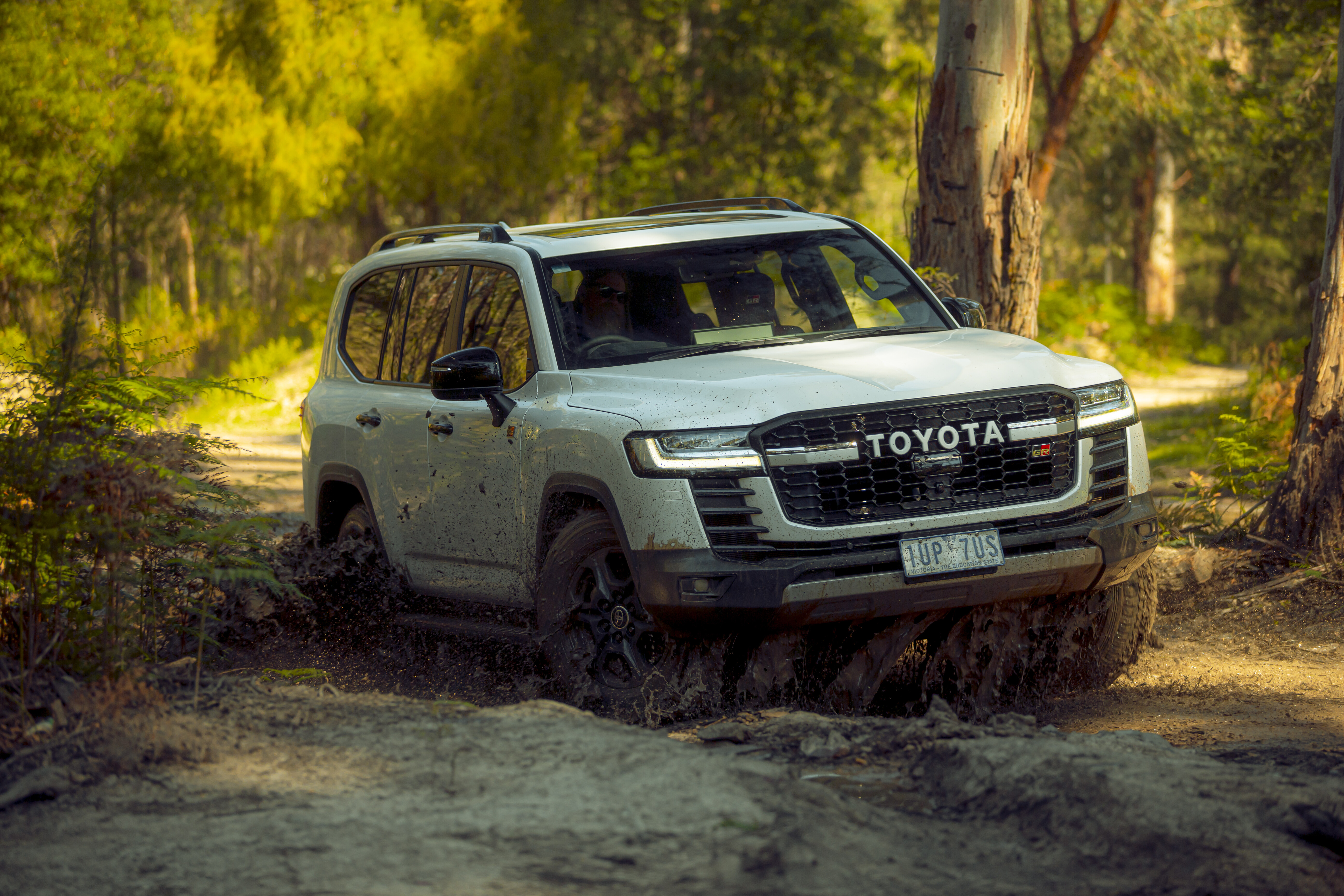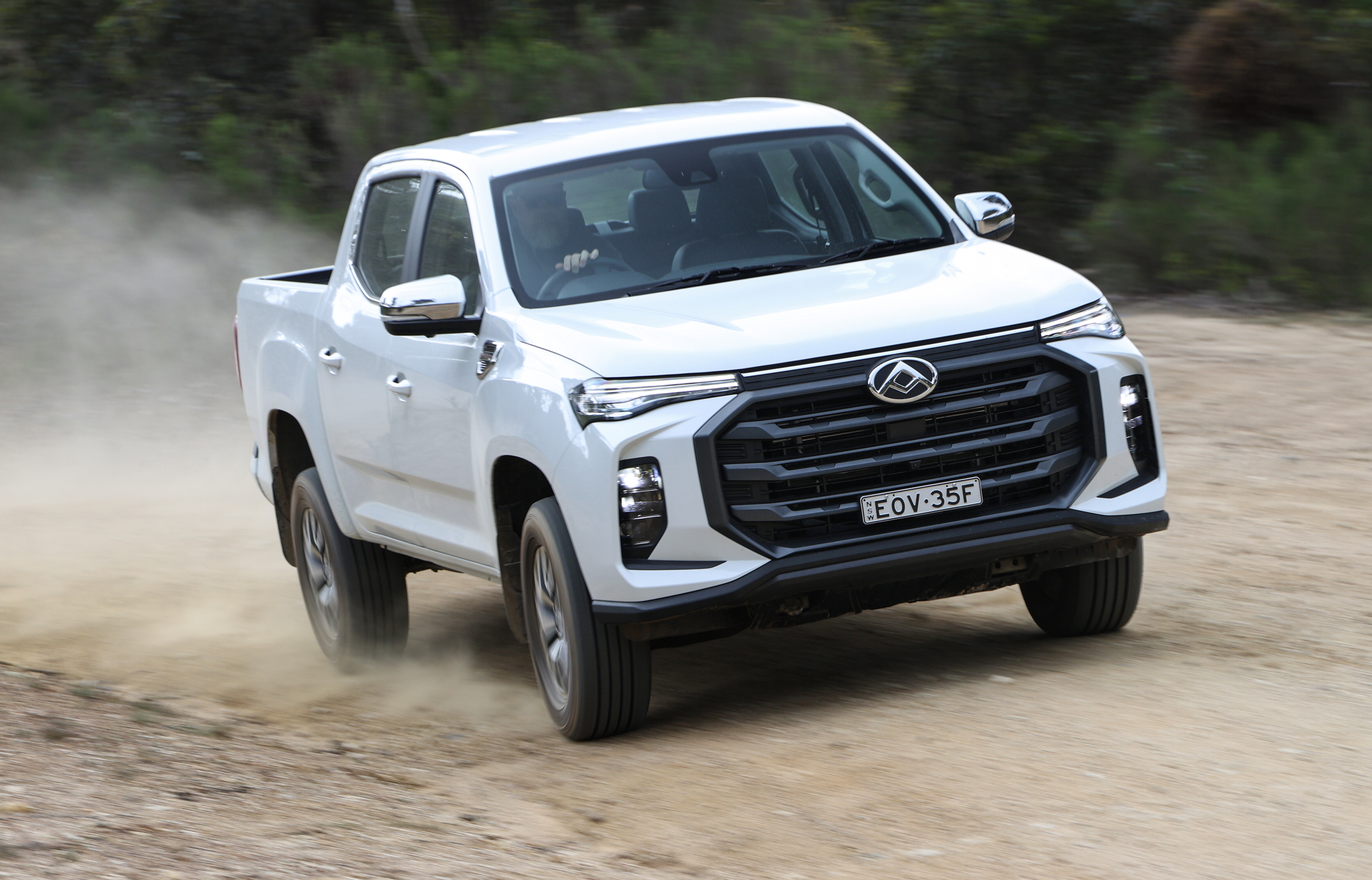With the inclusion of a third-row seat to its relatively new Pajero Sport, Mitsubishi now has two off-road capable, dual range, three-row 4×4 wagons in its showroom, and they are both Pajeros.
It begs the question, why is the ‘old’ Mitsubishi Pajero – so long in the tooth – still around? And can the Triton-derived Pajero Sport step up to take its place? We’ve driven them side-by-side to find out.
When the revolutionary NM Pajero debuted in 1999 it was well ahead of its time. Indeed, even the Range Rover of the day, generally acknowledged as the innovator of the 4×4 world, still relied on traditional separate-chassis construction and live axles at both ends – it wouldn’t ‘catch up’ with the NM’s ground-breaking monocoque construction and fully independent suspension until 2002.
The NM was a complete departure from all previous Pajeros dating back to the NA of 1982, all of which had a separate chassis with a live axle at the rear, initially on leaf springs and then on coils. So what bought about the revolutionary change with the NM? In a word: Dakar.
Mitsubishi first entered what was then called the Paris-Alger-Dakar in 1983 with its then brand-new Pajero winning both the Production and Marathon (production modified) classes with a near stock-standard vehicle. Two years later a modified production Pajero won outright, but by that time the writing was on the wall for production-based machines with the emergence of the purpose-built (so fast they had to eventually be banned) Group B rally cars, such as the Porsche 959.
To combat this Mitsubishi debuted its first built-for-racing Dakar prototype in 1987, the successors of which went on to win Dakar outright in 1992 and 1993. Wins in 1997 and 1998 were followed with a modified Pajero Evolution, effectively a limited-production homologation special loosely based on the earlier prototype cars and designed to circumvent new race regulations.
Thinking what was good enough to win this most gruelling of all long-distance rallies should be tough enough for everyday use, Mitsubishi then set about building a new Pajero inspired and validated by its Dakar winners. Most significantly, the NM’s double wishbone front suspension and multi-link rear suspension were developed using the experience gained with Dakar-winning cars. For the suspension to work effectively, Mitsubishi turned to an all-steel monocoque construction as per the Pajero Evolution.
The NM’s monocoque was claimed to have an astonishing three-times the torsional rigidity of the previous Pajero’s body-on-chassis arrangement, while the fully independent suspension offered more wheel travel than the outgoing rear live-axle chassis.
The fact that 17 years later (see ‘Timeline’ sidebar p35) the NM’s basic platform still underpins the Pajero of today is proof of the soundness of the design and of the enduring value of motorsport as an automotive development tool.
As good as the Pajero’s chassis is there are hurdles ahead for its aging 3.2-litre diesel, due to ever-tightening exhaust emissions regulations. The now imminent Euro 5 regulation will be cleared by fitting a diesel particulate filter before year’s end, while Euro 6’s tougher NOx limits will require SCR (AdBlue) or similar technology on all diesel engines, especially an older design like the 3.2, by mid-2018.
Will that be the end of the Pajero as we know it? Officially the word is: “Mitsubishi Motors will continue to sell and make improvements to the current model for the foreseeable future”.
This may be true, but there’s much speculation that the Pajero won’t exist beyond Euro 6 and that Mitsubishi’s fortunes in the 4×4 wagon market will be left to the new Pajero Sport. Can the Pajero Sport fill the Pajero’s very big boots?
POWERTRAINS AND PERFORMANCE THE Pajero Sport’s 2.4-litre diesel – a brand-new design and mated to an eight-speed automatic gearbox – is a world apart from the Pajero’s 3.2-litre diesel and five-speed automatic.
In very much a sign of the times the Sport’s small diesel comes close to matching the maximum torque of the one-third-bigger Pajero diesel by claiming 430Nm against the bigger engine’s 441Nm, even if it takes another 500rpm (2500 v 2000rpm) to achieve that maximum figure.
The 2.4-litre engine generates 133kW versus 147kW for the 3.2-litre, but tellingly the bigger engine has to rev harder to get to that peak power figure. Another way to look at the disparate technology on offer here is that a 3.2-litre diesel in the same state of tune as the Sport’s 2.4 would make 175kW and 570Nm. Sounds tasty, doesn’t it?
What’s crucial here is that the Pajero is a substantial 230kg heavier the Sport, and it lacks the advantage of the Sport’s additional and closer gearbox ratios. Pedal to the metal from low speeds there’s not much between the two, but once the Sport gets into its stride it’s noticeably quicker. The Sport’s smaller frontal area would also work to its advantage once you get to speeds (generally above 70km/h) where aerodynamics play an increasingly significant part in overall performance.
The Sport’s 2.4 is also quieter and smoother than the Pajero’s 3.2. In-line four-cylinder engines have an inherent dynamic balance problem – the bigger they are the more they vibrate, and there’s only so much balance shafts can do.
The Pajero’s general refinement also suffers against the Sport due to its now-old five-speed auto, which can’t match the fast, smooth and more ‘intelligent’ shifts of the Sport’s much newer eight-speed. With less weight to carry around and less air to push out of the way, it’s no surprise the Sport is also more economical.
RIDE AND HANDLING THE Pajero Sport may be ‘new’ compared to the Pajero, but it relies on an ‘old-school’ separate chassis, which is not a surprise given it’s derived from a commercial vehicle, namely the Triton ute.
The Sport impresses with a ride that’s generally smoother and quieter than the Pajero. One of the benefits of body-on-chassis construction is that road noise and harshness is easier to isolate than with a monocoque, and you can certainly hear and feel that difference with these two.
In comparison, the Pajero has a firmer, sharper ride, but it’s tighter and crisper in its general road feel. It’s also more stable on rough roads, especially at higher speeds. Back-to-back with the Sport you can feel the Pajero’s Dakar breeding. Ironically, the Pajero feels sportier than the Sport.
OFF-ROAD NEITHER the Pajero nor Pajero Sport are absolute leading edge when it comes to off-road performance, but both are still more than capable off-road and are certainly up to the demands of any keen recreational 4×4 enthusiast.
Despite being different at the very core of their respective designs the overall result of what they can do off-road is very similar, and they also get there in a similar way.
Both have Mitsubishi’s unique Super Select 4WD system, which is effectively a full-time system with the option of 2WD. The centre diff is a simple mechanical affair (no self-proportioning or self-locking) but the driver can easily lock or unlock the centre diff with a turn of the Super Select dial. For someone who knows what they are doing, Super Select is a great system.
Both the Pajero and the Pajero Sport also have a driver-switch++ed rear locker, but when the locker is engaged the traction control is cancelled across both axles, not just the rear. This means the locker isn’t always a benefit – sometimes it helps, sometimes it hinders.
The Pajero, with its fully independent suspension, is more dramatic off-road in terms of lifting wheels than the live-axle Sport, but it counters with significantly less front overhang, a little more clearance and better vision for the driver. The Sport comes back with a much deeper crawl ratio thanks to its eight-speed gearbox. Interestingly the two share a near identical wheelbase – the Sport’s 2800mm is just 20mm longer than the Pajero.
CABIN, ACCOMMODATION AND SAFETY BEFORE you even climb aboard you can notice the generational difference. The Sport has a proximity key, so you only need it on your person for the car to unlock; with the Pajero you have to press a button on the key fob.
Once inside, the Sport has push-button start where the Pajero requires you to insert the key in an ignition switch. There’s no reach adjustment for the Pajero’s steering wheel, either.
But that’s where the Sport’s advantages, if indeed these things are advantages, end. The Pajero’s cabin is far more airy and spacious, and the driver’s space isn’t compromised by ridiculously wide centre console, which tall drivers will find annoying in the Sport as it impinges on leg space.
The Pajero’s second-row seat is also considerably bigger than the Sport’s, while the difference with the third-row is even more apparent. Where the Pajero’s third row will take adults, even if it’s a squeeze, a normal-size adult simply can’t fit in the Sport’s third row. In fact, the Sport’s third row is only really suitable for young children, and with the third-row folded away the Pajero has far more luggage space than the Sport.
The Sport comes with five seats in its base-spec model, whereas all three Pajero grades have seven seats, which helps to redress the balance if you don’t need seven seats.
All Pajero and the Pajero Sport models have five-star ANCAP safety, despite the top-spec Sport being fitted with high-end safety equipment like autonomous braking – another sign of the inadequacy of the current ANCAP system.
PRACTICALITIES BOTH have similar tow ratings (3100kg for the Sport; 3000kg for the Pajero), a practical and identical wheel and tyre spec (265/60R18), and a full-size spare. While a 20-litre bigger fuel tank (88L v 68L) is a bonus for the Pajero and more than compensates for its extra thirst.
Both have practical engine bays, though there’s more space for an extra battery under the bonnet of the Pajero than the Sport. The Sport counters by drawing its intake air from the inner guard, whereas the Pajero’s air intake is under the bonnet lip – although the engine is protected by a water drain between the intake and the air filter.
SUM UP YOU only have to look at the current pricing to see the most expensive Sport, even with its far more extensive equipment list, is cheaper than the base-spec Pajero.
In essence the Sport is a much smaller wagon than the Pajero, so it can never fill the role of its older brother even if that brother is retiring. Not that the Pajero Sport is a bad thing, far from it. It’s just in a different – and smaller – class.
For its part, the Pajero feels like it’s ready to go around again for another decade. What the Pajero simply needs is a powertrain that meets the upcoming regulations, and Mitsubishi could do a lot worse than fitting the one from the Sport.

*Based on fuel tank capacity, test fuel use, and a 50km ‘safety’ margin.
To watch how the new Pajero compared to it’s older brother, check out the video review here.





